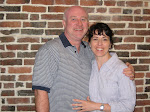A client who is coming out of a rehab or hospital, back home, generally needs 24 hour a day care to start, if 24 hour a day care is recommended by the discharge planners. The expectations of the client and their family should be that the home care worker is available to them 24 hours a day and awake during sleeping hours. This type of arrangement will be accomplished with a combination of a handful of employees, because the home care workers need to be available to the client and their families 24 hours a day. No one worker can provide safe, professional care without sleep and time to themselves. A client that gets up several times in the night and keeps an erratic schedule with lots of hands on work is in need of 24 hour a day care. The family is charged an hourly fee for 24 hour a day care. There does not need to be a bedroom for the caregiver and it is expected that the home care worker will provide their own meals. 24 hour a day care can be set up by Right at Home schedulers within 24 hours of a family's initial phone call to us.
After that client has re-established themselves at home in a routine, they may be eligible for live in home care. Live in home care exchanges room and board for a lower overall home care fee. The worker "lives in" the client's home during the period of days that they are working. The client must have a separate bedroom for the worker and it is expected that worker will eat the client's food.
The expectation of how much the live in will work is different from 24 hour a day care. Live in home care workers work 8 hours a day. This is spread throughout the day to help the client with their Activities of Daily Living. The other 16 hours of the day are for leisure and sleep, though the worker is still in the house. A client that needs help getting prepared for the day, showering, medication reminders, meal preparation, supervision (dementia clients), and needs help getting to bed is perfect. Live in home care workers are harder to come by, because the agency needs someone that can commit to be away from their home for several days at a time. This is a worker that will devote themselves to that one client for a long period of time. It takes us about a week (or sometimes more) to set up a live in situation The family is charged a per day fee for live in care.
Sometimes families call me and specify that they think that these two types of care are the same. At Right at Home, both types of care happens under the supervision of our RN supervisors and they get quality agency care with all the protections for the family, ie workers compensation insurance and general and professional liability insurance. The expectations and worker are very different to give safe care to the client.
Sometimes, I have heard of agencies that start live in care and then, after the care is in place, they tell the family that the case is too hard and move them to 24 hour a day care. Right at Home will generally get the call from the family looking for an alternative to the shock of the new financial commitment. We feel that if the standards are shared with a family before care begins and agencies present "live in" for what it really is- a living arrangement with 8 hours of care, and not a "cost savings" option, then clients can get the best care when they need it.





